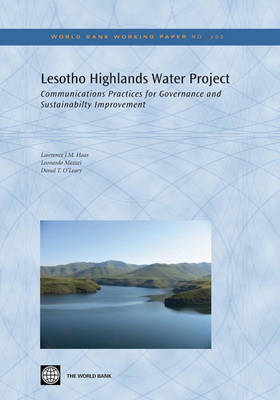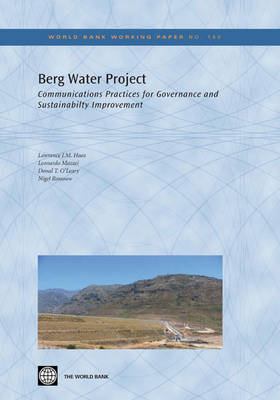World Bank Working Papers
1 primary work • 2 total works
Book 200
Lesotho Highlands Water Project
by Lawrence J M Haas, Leonardo Mazzei, and Donal T. O'Leary
Published 30 July 2010
Effective communications in all stages of the project cycle (including identification, preparation, implementation and operation) are critical to the success of complex hydraulic infrastructure projects, involving many stakeholders. Being the largest binational water transfer scheme in the world and because of its phasing, the lessons learned in this case study are multifaceted. The LHWP can serve as a model of mutually beneficial development--through demonstrating the benefits of bilateral government cooperation in the development of an international river that exceed those of individual approaches as well as strengthening political cooperation.
Berg Water Project
by Lawrence J.M. Haas, Leonardo Mazzei, Donal T. O'Leary, and Nigel Rossouw
Published 8 July 2010
The past decade has witnessed a major global shift in thinking about water, including the role that water infrastructure plays in sustainable development. This rethinking aims to balance better the social, economic, and environmental performance aspects in the development and management of large dams. Infrastructure strategies must complement strategies for water, environment, and energy security and for emerging concerns to reduce vulnerability in water resource systems to climate change on the horizon. Communication is central to multi-stakeholder dialogue and partnerships at all levels needed to achieve sustainability and governance reform in water resource management and infrastructure provision. At the same time, communication drives the advocacy to mobilize political will and public support for beneficial change and continuous improvement in practices. This case study emphasizes that is not only important to mobilize all opportunities to reconcile water demand and supply in river basins that are coming under increasing levels of water stress, but also to integrate effectively governance and anti-corruption reforms and sustainability improvements into all stages of the planning and project cycle-adding value for stakeholders.

